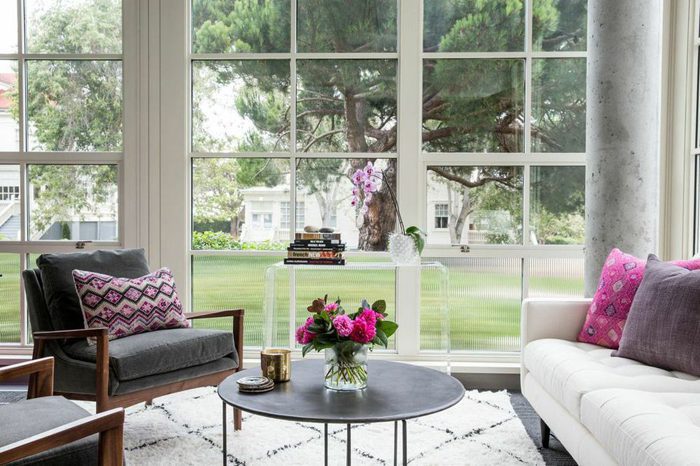
“The Work We Do” is an interview series that asks creatives with daydream-worthy jobs how they got where they are—and what it’s like to live a day in their shoes. This week, I’m speaking with San Francisco-based interior designer Heidi Caillier.
Heidi left a flattering comment about our apartment years ago, when we were living in New York, and of course I was curious to see who she was. I found myself poring through her blog, The Rustic Modernist (a great name). When I started this series, I came across that name again and reached out immediately to see if Heidi would speak about the path she took to becoming an interior designer.
Where did you find your start as a designer? Was interior design something that you’ve always had a passion for?
For a time, I was just floating around career-wise, bartending and trying to figure out what I wanted to do with my life. There were so many options and none of them were all that appealing to me. But I found myself obsessively buying design magazines and perusing blogs, so I decided to start my own, The Rustic Modernist. I had no idea what I was doing, how to use Photoshop, anything—I just dove in and wrote about what inspired me. It was just a tiny little site but it led to my first design job, which more or less started everything for me. I laugh looking back because I was in so far over my head, but I learned so much—including the fact that I had a lot more to learn.

What did you study in school?
I actually have a Masters Degree in International Public Health. I got my education very young and knew by the time I finished my degree that it wasn’t what I wanted to do with my life. It took me many years to figure that out, but when I finally did, I knew that this was absolutely it. I had no idea what being an interior designer entailed. I did take a few classes at UC Berkeley Extension, but I had been told by a number of people that learning on the job is much more important in this field and I took that to heart. After I left my first job in a design firm, I worked in a showroom, which was a great decision. I learned how the industry works and how designers work. There’s so much more to it than simply having good taste or a good eye.
What other career paths had you considered before deciding on this one?
I always thought I would be a doctor, or that I’d work overseas with the Peace Corps or another humanitarian organization. But I was really one of those people who considered at least a hundred careers before landing where I did. I took classes to be a nurse, an accountant—you name it. Interior design is the only thing that ever stuck, and I’ve never wavered from it.
In any creative profession, everyone seems to say there’s no such thing as a typical day. Is this true for you, as well?
Yes, there really are no typical days when you have your own design firm. Every day is completely different, which I love. Some days I spend at the design center or shopping for fabric, furniture, and rugs. Other days I spend on the computer drafting plans, placing orders, designing custom furniture, putting out fires—there are a lot of fires to put out on this job!
Otherwise, I’m meeting with contractors, or spending time at my workrooms going over details with my seamstress, upholsterer, or furniture maker. And, of course, I have to keep my business on track, so there’s billing, reconciling books, keeping up with social media, and trying to help my small business grow. Most days are a mix of all of these things.
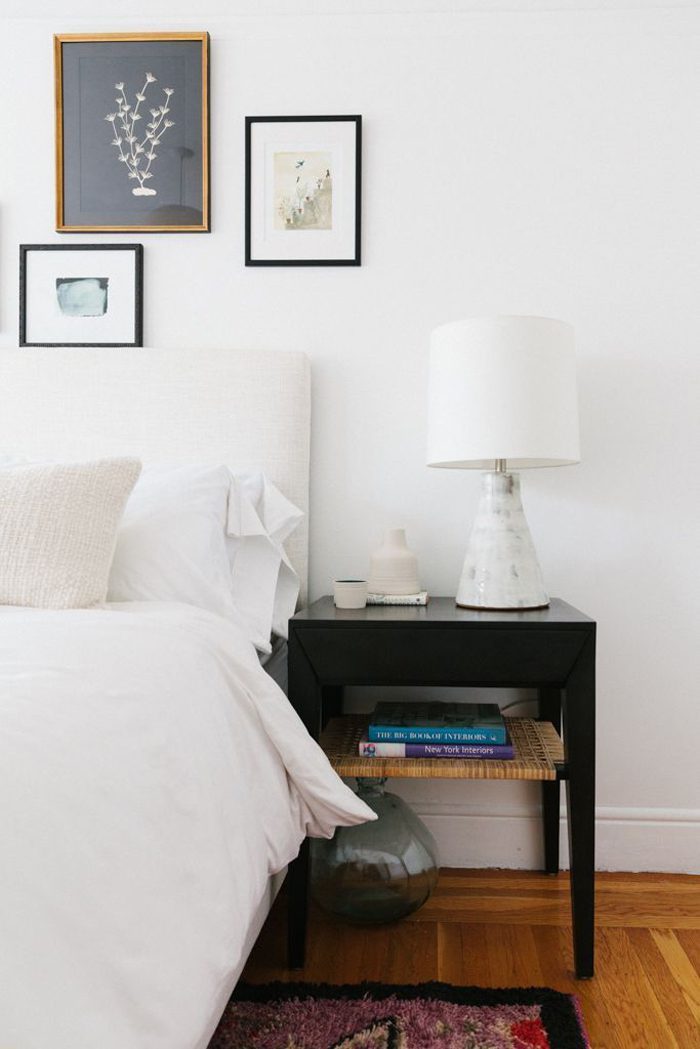
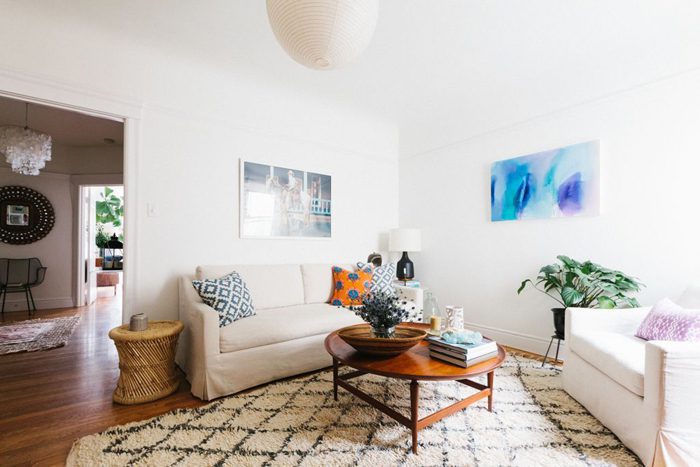
As a designer, how would you describe your aesthetic?
I like to design spaces that are beautiful and interesting, but still manage to be comfortable and livable at the same time. I like to mix old and new, layering texture and color with pieces that have history and feel well-traveled. And I think every room should have an element of the unexpected, whether it’s a piece of art, a found object, or a crazy print.
What would you name as the most challenging aspect of your job?
There are a lot of steps required to make one simple thing happen. You can’t just find a fabric and buy it. You have to contact the showroom, make sure it’s in stock, get the price, put it on reserve, request a cutting for approval, wait for the cutting to come, contact the showroom to approve it, order it, contact your workroom to let them know what’s coming. It still surprises me how much work goes into something simple like buying a chair and having it reupholstered. You really have to be an excellent multi-tasker, but I love that part of the job.
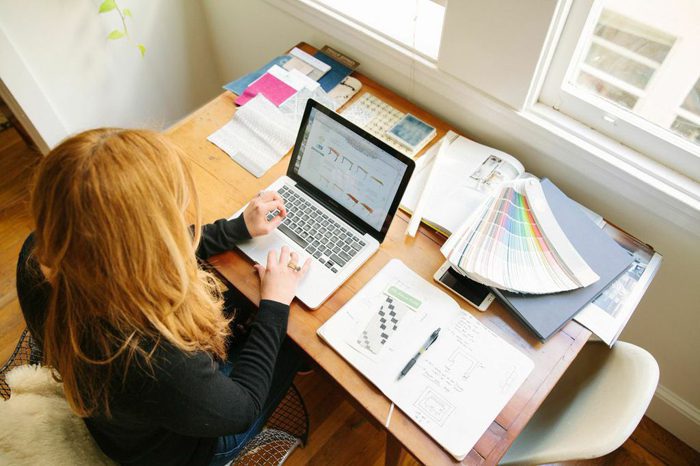
What would you tell someone hoping to get into your line of work? Is there anything that would have been especially helpful for you to know when you were just starting?
Educate yourself. Study pictures of rooms. What do you like? What makes it feel balanced? Figure out your point of view. Then, go work with someone you admire, and ask lots of questions. Taking classes to get good at CAD, Photoshop, SketchUp is helpful, too, but I really think that finding a mentor and working with designers you respect is the most important step anyone can take.
What’s your favorite part of the job?
The end result! There is nothing more satisfying then seeing all of your hard work come to fruition. Projects tend to take a long time, but that end moment when you see all of the furniture start coming in, the fabrics coming together, and all the little details that you obsessed over for a year—that is really the best. Or when you have had to convince a client that a certain piece is perfect, even if they don’t see your vision. It’s always nerve-wracking, because people are really trusting you. But when it comes and they fall in love with it, too? That’s such a great moment.
How do you stay inspired? What gives you the fuel to keep creating?
Definitely magazines and blogs, and I’m always looking for inspiration from other designers I admire. I also love to travel. Travel is the most inspiring thing I can do, especially if I’m in a rut—the colors, the scenery, seeing how different cultures live. Even if it’s just getting out and taking a walk in the park. Sometimes you’ll see color combinations in nature that you would never have considered, and you can find ways to incorporate them into projects.
To finish, tell us about a project you’re working on now that you’re especially excited about.
I have one project I’ve been working on a for a year that’s almost finished and I’m so excited to see it all come together. The client and I have both been very patient trying to find just the right pieces, and that always produces the best results. I’m also working on several large commercial projects in San Francisco right now. All of them are so different, but I’m equally excited about each—I can’t wait!
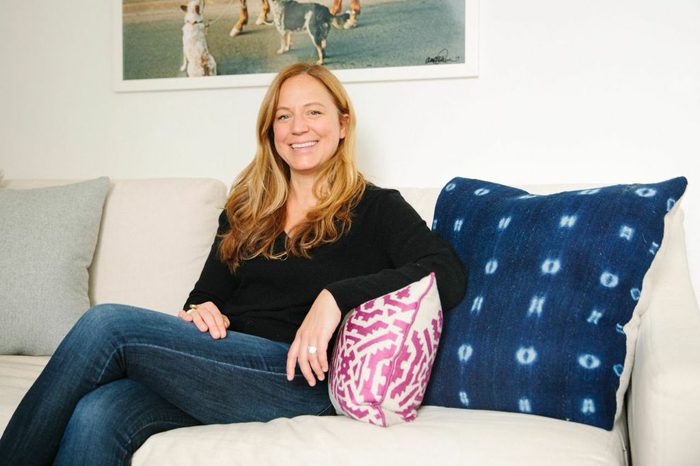
Thanks so much, Heidi!
Thank you to Shoko Wanger for her help with this series. Read more about the inspiration behind it. Know someone who’d be great for “The Work We Do,” or have a request for a profession you’d love to know more about? Email [email protected].
Photos by Lauren Edith Andersen.
Bedroom: Bed: All Modern / Nightstands: Noir Furniture LA / Lamps: Arteriors, Earnest and Denton lamps / Sheep Art: Meagan Donegan / Art above bed: Jennifer Ament, Heather Day / Rug: Anthropologie / Chair: Jayson Home (n/a) / Blue Vase: Giselle Hicks
Living room: Rug, Vintage Moroccan from Pink Rug Co. (Etsy) / Sofa and Chair: Restoration Hardware, Belgian Slope Arm Sofa and Chair / Bookcase: Room and Board / Coffee table: vintage from eBay / Console: vintage from Etsy / Photography: Alex Farnum / Painting: Jenny Andrews-Anderson / Side table: Saarinen at Room and Board / Lamp: West Elm (n/a) / Juju hat: African Art
Office: Sofa: Crate and Barrel / Chairs: Gilt group / Pillows: Amber Interiors / Table: CG Sparks / Console: CB2 / Rugs: Overstock (n/a)


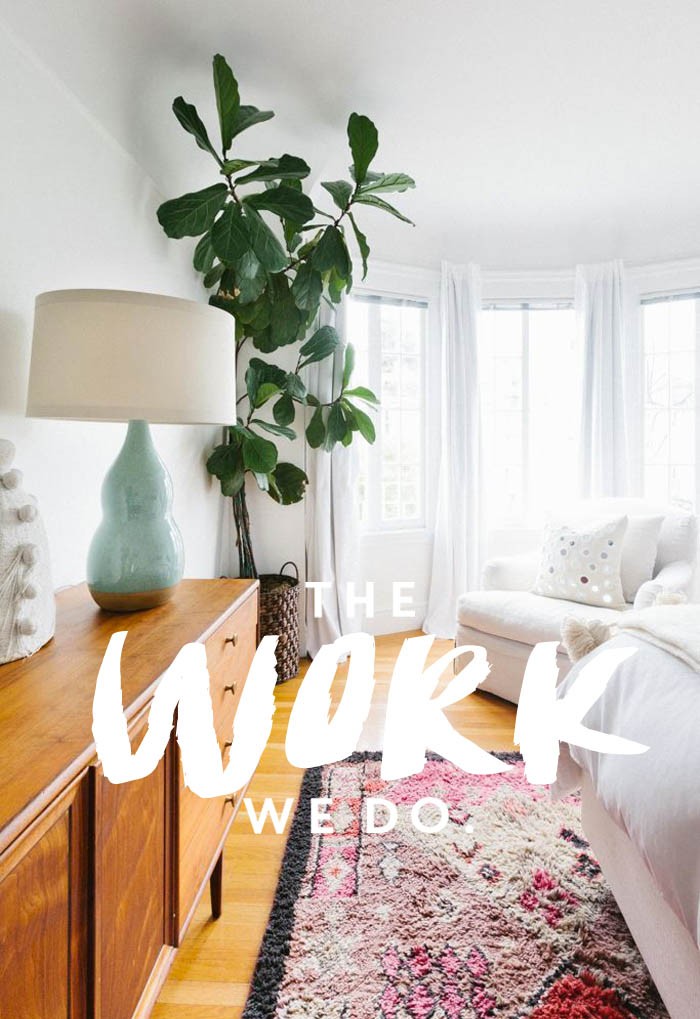
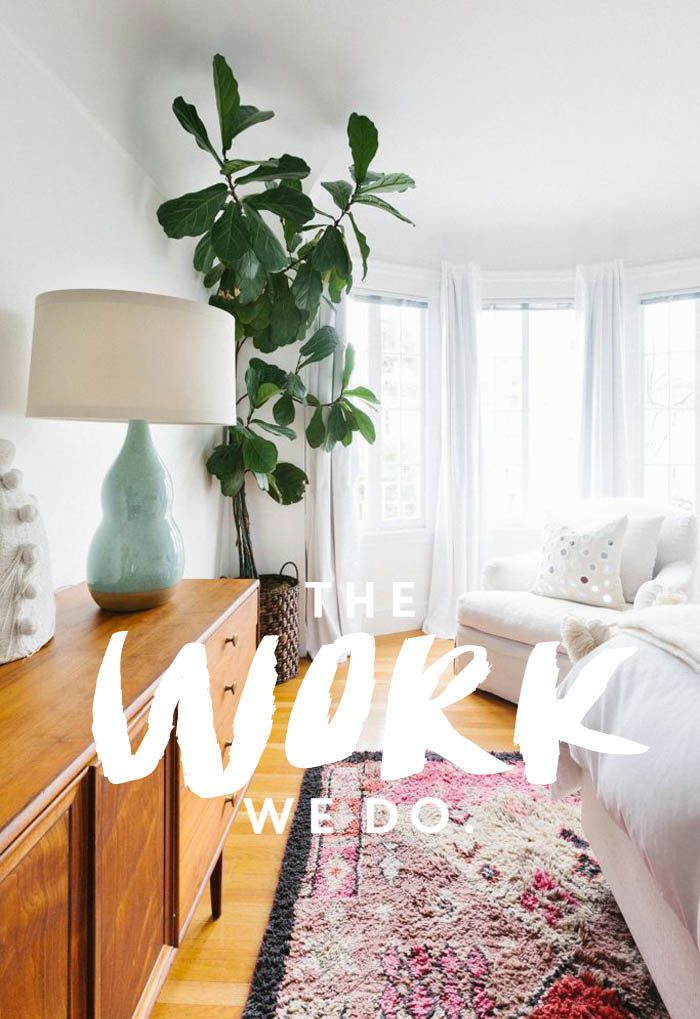
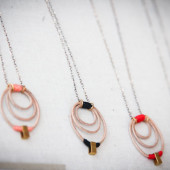













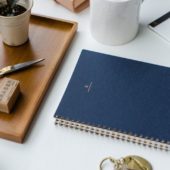




















17 Comments